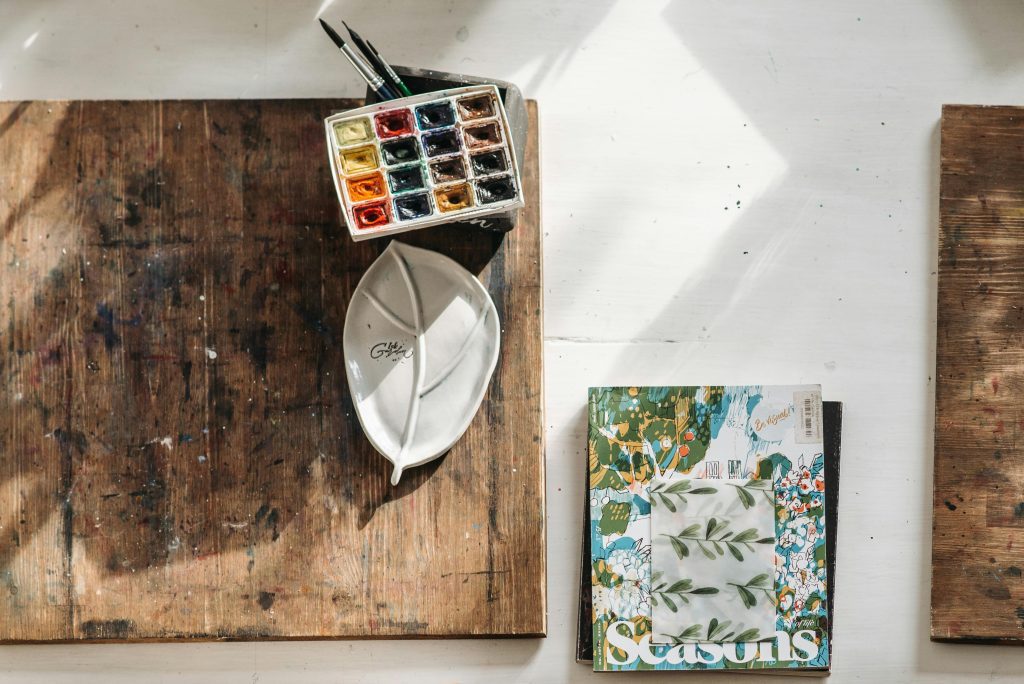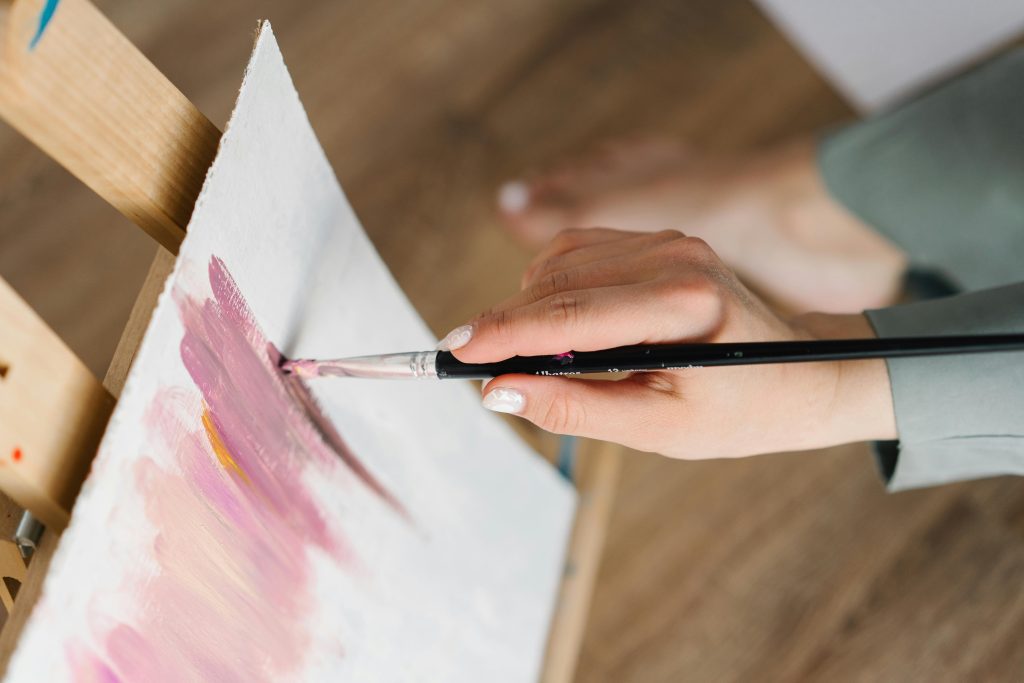Does Your Portfolio Look as Good on a Phone as It Does on a Laptop?

When you hear the term “responsive design,” it might sound like something that belongs in a developer’s handbook, not an artist’s portfolio. But here’s the thing, your portfolio is a living space for your art, and if that space feels cramped or broken on someone’s screen, the experience falls flat. Have you ever clicked on a site from your phone only to see images cut off or words shoved into tiny corners? Imagine a curator experiencing that with your portfolio.
The truth is, responsive design isn’t about chasing trends, it’s about making sure your work can breathe on any screen. Whether it’s a laptop, a phone, or even a tablet someone pulls out in a café, your art deserves to be seen clearly. You wouldn’t show a painting half covered with a cloth, so why let a clunky layout hide your work?
Many artists think, “I’m not tech-savvy, I’ll just upload my work and hope it looks okay.” But a small tweak in layout or choosing the right platform can make a massive difference. It’s less about coding and more about choosing tools that do the heavy lifting for you.
Think about this: curators and jurors often browse on tablets because they’re traveling or meeting in coffee shops. Collectors scroll from their phones at night when they’re winding down. If your images load crooked or your videos are cut off, you’ve lost them before they even see your style.
Responsive design ensures your first impression is always strong, no matter how or where someone is looking at your work. And that, more than anything, makes your portfolio professional without you even having to say a word.
So yes, responsive design is for you, the artist who wants her work to shine on every screen. And the best part? You don’t need to be a tech wizard to make it happen.
The Coffee-Shop Collector Scenario
Let’s paint a picture. Imagine a potential collector sitting in a coffee shop, latte in hand, scrolling through their phone. They come across your portfolio. If your site isn’t responsive, your artwork might appear squished, text unreadable, and navigation buttons too small to tap. Do you think they’ll pinch and zoom to figure it out, or will they move on? You already know the answer.
Now flip it. Imagine they open your portfolio and the images adjust perfectly, text flows naturally, and the whole thing feels like it was designed for their phone. Instantly, your art looks intentional, professional, and easy to connect with. That’s the subtle power of responsive design, it’s invisible when it works, but painfully obvious when it doesn’t.
This scenario plays out daily. Maybe the viewer is a curator traveling between studio visits, or a residency coordinator checking submissions while waiting at an airport. If your work isn’t easy to view on their device, you risk being forgotten before they even remember your name.
Have you ever tried buying something online and given up because the site was too clunky on your phone? That same frustration applies to your portfolio. You don’t want a curator sighing and saying, “I’ll come back later,” because chances are, they won’t.
Responsive design is like hospitality for your art. You’re making it easy for guests to enjoy the space no matter how they walk in. Think of it like having enough chairs for everyone at the dinner table, you wouldn’t ask someone to stand, would you?
So when you think about collectors or jurors, don’t picture them only behind big computer screens. Picture them as people, just like you, juggling their day with phones and tablets. And then make their viewing experience delightful.
Your Art Really Deserves a Seamless Experience
Here’s the truth: if your portfolio looks messy or hard to navigate on a phone, it’s not your art that’s being judged poorly, it’s the way it’s being delivered. Think about watching a stunning movie on a broken screen, it’s hard to fully appreciate the beauty because the viewing tool gets in the way. Your portfolio works the same way.
Your art already does the heavy lifting. The colors, textures, and ideas are yours, but the way they’re shown online should never distract. Responsive design is simply removing the barriers between your work and the viewer. It’s giving your art the clean stage it deserves.
Consider a juror reviewing 200 submissions for an open call. They’re moving fast. If your images don’t fit their screen properly, or if scrolling feels awkward, you’ve created friction. And friction is dangerous because it makes people close tabs quickly. You want your portfolio to glide, not grind.
The exciting part is that many platforms, including networks like Women in Arts, already have responsive layouts built in. That means you don’t need to reinvent the wheel, you just need to use what’s already there. Think of it like using a gallery that already has perfect lighting, instead of building your own spotlight system.
And remember, the more seamless the experience, the less the viewer is thinking about the “site,” and the more they’re connecting with your art. That’s the ultimate goal: you want them focused on the story behind your work, not on whether the text is readable.
So give your art the stage it deserves. Make the delivery match the brilliance of the work itself. Responsive design is how you make sure the curtain always opens smoothly.
From Desktop to Pocket: Following the Viewer’s Journey
Let’s be real, most people’s lives are split across multiple screens. Maybe they spot your art on Instagram while scrolling on their phone. They save the link, and later that night, they check it on their tablet in bed. A few days later, they pull it up again on their office desktop. Your portfolio needs to follow them seamlessly through all of that.
Have you noticed how frustrating it is when something looks perfect on your computer but broken on your phone? That frustration is what responsive design eliminates. It adapts automatically, almost like magic, making sure your images and text flow no matter what screen they’re on.
Imagine a potential residency director who first views your portfolio during their commute. They might start on a phone, but later share it with colleagues on a larger screen. If your site doesn’t adjust smoothly, the conversation about your work ends before it begins. But if it adapts perfectly, your art becomes easy to share and recommend.
This is especially true when you think about collaborations. Someone excited about your work might want to send your portfolio link to a friend. If that friend opens it on a tablet and sees a jumbled mess, the impression is ruined. But if it looks beautiful everywhere, your chances of opportunities multiply.
Responsive design is like a tour guide for your art, it takes viewers along their journey without making them stumble. They move from screen to screen without even noticing the transition, which means your work is always at its best.
And honestly, isn’t that what you want? For your art to stay strong no matter where or how it’s viewed? Following the viewer’s journey is about respecting their habits, and when you do that, they’re far more likely to stick with you.

Women in Arts Network: Built With You in Mind
Here’s the part that will make you smile. If you’re using platforms like Women in Arts Network, you don’t have to worry about coding or resizing images for every device. Their portfolios are already designed to be responsive, which means your art looks professional whether it’s on a phone in Tokyo or a desktop in New York.
This is such a game-changer for artists who want to spend more time creating and less time stressing about tech. You shouldn’t have to be a web developer to share your art beautifully. Women in Arts Network understands that, and they’ve built tools that put design power into your hands without the overwhelm.
Think about how much easier it feels when you don’t have to second-guess if a juror will see your portfolio properly. Instead, you can focus on uploading your latest project and knowing it’ll be displayed clearly no matter where it’s seen. That’s not just design, that’s peace of mind.
And it’s not just about ease, it’s about community too. By building portfolios on a network created for women artists, you’re not only showcasing your work, you’re standing among peers who are doing the same. There’s something powerful about being part of a shared space where everyone benefits from the same design standards.
Responsive design isn’t a solo task anymore, it’s built right into the tools that support your career. Women in Arts Network is like having a gallery that constantly updates its lighting, walls, and layout just so your work always shines.
So why wrestle with clunky websites when you can have a portfolio that works beautifully out of the box? That’s one less barrier between your art and the people who need to see it.
The “One Chance” Impression
Here’s the kicker, most people decide within seconds whether they’ll keep browsing a site or not. You get one chance to hook them. If your portfolio feels messy or awkward on their device, they’re gone. It’s not personal, it’s just how people interact with the internet.
Now imagine those same seconds playing out with a responsive portfolio. The images fit perfectly, the text is easy to read, and navigation feels effortless. The viewer isn’t fighting with the site, so they’re free to connect with your art. Those first moments set the tone for everything that follows.
Think of it like meeting someone new. If you show up disorganized and hard to follow, it doesn’t matter how brilliant you are, people may not stick around. But if you come across polished, approachable, and clear, they want to hear more. Your portfolio is making that first impression for you.
And don’t forget, jurors and curators often see hundreds of portfolios in one sitting. They’re looking for reasons to filter out work. A broken design on mobile is an easy excuse to move on. Why give them that chance when you can present your work flawlessly instead?
This isn’t about being flashy or over-designed either. It’s about being clean, functional, and professional. Your art provides the wow factor, responsive design provides the smooth entry point. Together, they create the experience that keeps people engaged.
So ask yourself: if someone opened your portfolio right now on their phone, would you feel confident about the impression it gives? If not, it’s time to make that one chance count.
The Mobile-First Reality You Can’t Ignore
If you stop and think about it, when was the last time you opened an email on a desktop before checking it on your phone? Probably not often. Now imagine a curator opening your portfolio link on their phone and waiting for it to load or struggling to zoom in on a blurry image. The moment is gone. That initial frustration can cost you a valuable opportunity before they even see the quality of your work.
The truth is, mobile has become the default. Collectors scroll on phones while commuting, jurors check submissions on tablets at home, and gallerists often peek at portfolios on the go. Your portfolio needs to perform like it was designed for mobile first, not as an afterthought. If it looks great on a phone, it will look even better on a bigger screen.
Think of it like preparing your art for an exhibition. You wouldn’t hang paintings without checking the lighting or spacing first. Mobile responsiveness is the digital version of that attention to detail. It shows professionalism and respect for your audience’s time and attention.
And here’s the bonus: a mobile-first design doesn’t mean compromising your vision. It just means rethinking hierarchy. The most important images and text should appear quickly, without requiring endless scrolling. A curator should be able to understand your style within seconds.
When artists resist mobile-first thinking, it usually comes from fear that their work will be “shrunk down” or lose impact. But the opposite is true. A well-designed responsive portfolio lets your art shine in any format. It’s like framing a painting properly, no matter the size of the wall.
So here’s the real question: if you pulled up your portfolio on your phone right now, would you feel proud to hand it to someone at an event? If the answer isn’t an immediate yes, it’s time to treat mobile design as your top priority.
Why First Impressions Happen Faster on Smaller Screens
Let’s talk about the psychology of first impressions. On a desktop, someone might give you 20 or 30 seconds to look around. On a phone, you have less than 10. That’s not meant to scare you, but to remind you how quickly people judge clarity and quality. Your design should guide their eyes immediately, not make them pinch, zoom, or swipe in confusion.
Imagine a juror reviewing 500 applications on an iPad. Do you think they’ll wrestle with awkward navigation for just one artist? Of course not. They’ll move on, and your hard work will get lost in the shuffle. That’s why your portfolio should deliver impact instantly.
The trick is simplicity. Responsive design isn’t about squeezing everything onto a small screen. It’s about rearranging your content so it feels natural. Think of your art pieces as performers on stage. On mobile, you want the spotlight on one star at a time, not a crowded group where no one stands out.
Universal design principles apply here. White space, legible text, and consistent spacing matter even more on smaller screens. These details create a feeling of ease that makes someone stay longer. When navigation feels smooth, your viewer relaxes and can actually enjoy your work.
A cluttered mobile experience, on the other hand, tells an unspoken story. It suggests you haven’t thought about your audience, or worse, that your art is better in theory than in practice. That’s not a message you want to send to potential collectors.
So here’s a simple challenge: ask a friend to look at your portfolio on their phone for 15 seconds. Then ask them to describe what stood out. If they can clearly articulate your style or recall a specific artwork, you’ve nailed that crucial first impression.
The Tablet Test: Where Professionalism Shows
Here’s something artists don’t always consider: many jurors and curators actually prefer tablets when reviewing work. Why? Because they’re portable, larger than phones, but less clunky than laptops. If your portfolio looks awkward on a tablet, you’re leaving a huge gap in accessibility.
Think about the difference between seeing your art on a gallery wall versus in a catalog. The wall gives impact, but the catalog is intimate and transportable. A tablet is the digital equivalent of that catalog. It’s how decision-makers carry your art with them.
On tablets, layouts can sometimes break in strange ways. Text might look oversized, or images might stretch awkwardly. This happens when a portfolio isn’t built with true responsiveness but just “shrinks down” a desktop site. A responsive design should adapt naturally to the in-between space of tablets.
The good news is that testing is easy. Open your portfolio on a tablet, flip it from portrait to landscape, and see if it still feels seamless. Your art should command attention in either orientation, just like it does whether hung in a small studio or a wide-open gallery.
The artists who master this step send a subtle but powerful signal: I care about how my work is experienced. That message can be as persuasive as the work itself because it reassures curators and collectors that collaborating with you will be smooth and professional.
So, ask yourself: if a curator brought up your portfolio on their iPad at a café, would they be impressed enough to show it to a colleague sitting next to them? If not, this is where your design needs refining.

The Emotional Flow of Scrolling
We don’t often talk about emotions in relation to design, but we should. Scrolling on a device creates a rhythm. If your portfolio flows well, it feels like a story unfolding. If it doesn’t, it feels like a chore. Viewers remember that emotional impression just as much as your artwork.
For example, imagine scrolling through a portfolio where each artwork loads perfectly, accompanied by a short caption. The pace feels natural, like walking through a thoughtfully arranged gallery. Now compare that to one where images take too long to load, or captions overlap awkwardly. Which artist do you think feels more professional in that moment?
Responsive design isn’t only technical, it’s emotional. It’s about designing an experience that mirrors the care you put into your physical exhibitions. A portfolio that flows smoothly gives viewers space to appreciate your work without distraction.
This emotional flow becomes especially important for collectors. Many make snap decisions based on how they “felt” when viewing your art. A frustrating portfolio experience can sour that feeling, no matter how strong the art is.
Here’s a relatable test: hand your portfolio to someone unfamiliar with your work and simply watch them scroll. Don’t explain anything. If they look relaxed and engaged, you’ve nailed it. If they frown or struggle, your design is interrupting their emotional connection.
Remember, art is about evoking feeling. Why not let your portfolio design reinforce that, instead of getting in the way?
Universal Scenarios That Highlight Design Flaws
Let’s make this real with some universal examples. Picture a collector sitting in an airport lounge, scrolling through portfolios on their phone. They open yours, but half the images don’t load properly. Do you think they’ll bookmark it for later? Not likely. They’ll just move on.
Or imagine a juror reviewing hundreds of submissions late at night on their tablet. They land on your page, but the navigation menu covers half the screen. Instead of wrestling with it, they skip to the next artist. That’s one opportunity gone.
Now flip the scenario. A curator checks your portfolio on their phone and everything loads quickly, images are sharp, and the layout feels effortless. They smile, maybe even share it with a colleague. That small moment of delight sets you apart.
These scenarios aren’t rare. They happen every single day. Which outcome you land in depends entirely on how much attention you’ve given to responsive design.
The beauty of these universal moments is that they’re predictable. You know your work will be viewed on phones, tablets, and laptops. Preparing for that isn’t extra credit, it’s the baseline for presenting yourself as a serious artist.
So the real question is: which story do you want people to tell after seeing your portfolio? The one where they struggled, or the one where they were impressed?
Putting Viewers First Always Pays Off
At the end of the day, responsive design isn’t just about code, layouts, or technical details. It’s about respect. It’s about acknowledging that your art will be seen in many different contexts and making sure each one feels intentional.
Think of it like hospitality. When you invite someone into your studio, you probably tidy up, offer them a seat, and create a welcoming atmosphere. Your digital portfolio should do the same. It should make people feel considered and valued.
The artists who embrace this mindset don’t just impress viewers, they build trust. A responsive portfolio says: I care enough to make your experience smooth and enjoyable. That trust often leads to more opportunities, whether in residencies, exhibitions, or sales.
Of course, this doesn’t mean you need to become a tech expert. Many platforms today, including Women in Arts Network, offer built-in responsive design. Your job is to take advantage of those tools, test your portfolio regularly, and keep refining the details.
Here’s the truth: viewers don’t remember whether you used a website builder or hired a designer. They remember how your art made them feel. And responsive design clears the path for those feelings to come through, unhindered.
So let me leave you with one last question: if someone saw your portfolio right now, on any device in any place, would they walk away thinking, “That’s an artist I want to follow”? If you can say yes, you’ve done your job. If not, now is the perfect moment to make the changes that will get you there.
